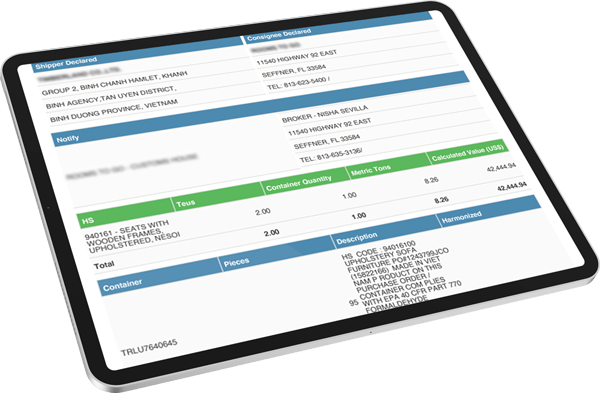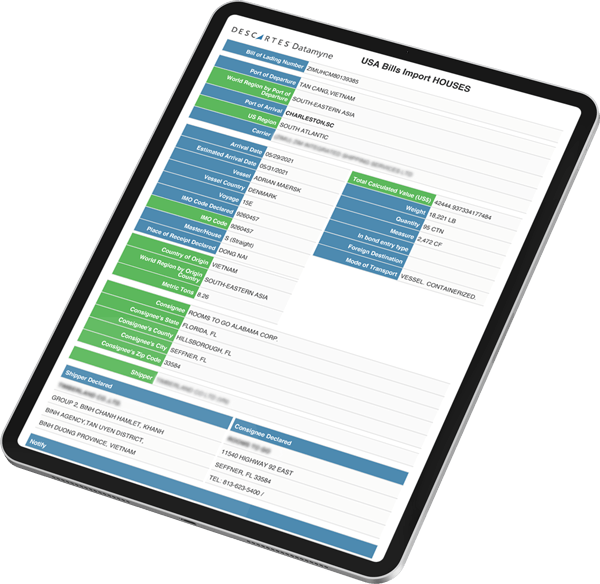[
Hey there, let me tell you about this thing called the bill of lading data. You know, it’s that fancy paper folks use when they’re shipping stuff around the world. It’s real important for trade and all that. Now, let’s break it down nice and simple, just like how we talk in the village.

First off, what is a bill of lading? Well, it’s a document that shows what’s being sent, where it’s going, and who’s sending it. You can think of it like a receipt but for shipping goods. It has all sorts of details like where the goods come from, where they’re headed, and how many there are. They even write down how the stuff is packed, like in boxes or barrels, and who the carrier is – that’s the company doing the shipping.
Now, this bill of lading data is a treasure trove for businesses. It helps them see what’s coming and going, keeps track of shipments, and makes sure everything is done by the book. When folks talk about international trade, they’re often leaning on this bill of lading data. It helps them make sense of what’s happening in the big ol’ world of buying and selling.
- Shipment Volumes: This tells how much stuff is being moved. More stuff means busier ports and more work for everyone.
- Tariffs and Duties: This is about the taxes folks pay when stuff crosses borders. It can change how much people wanna buy or sell.
- Supply Chain Visibility: Knowing where your goods are at any time is super important. This data helps with that.
- Risk Assessment: Companies can see if there’s a chance of delays or problems with their shipments.
- Compliance Monitoring: Makes sure everyone is following the rules and regulations, so no one gets in trouble.
- Performance Analysis: Companies can look back and see how well they did with their shipments and where they can do better.
Every time a shipment is sent, it gets logged in this system. So if you’re a business owner, you’ll want to pay attention to this bill of lading data. It can tell you if you’re making the right choices or if you need to change things up a bit. Plus, with all that information, you can plan better for the future. Like knowing when to stock up on goods or when to slow down because things are getting too crowded.
Now, let’s chat a bit about where to find this bill of lading data. There are many databases and services that let you peek at this information. Some places even let you try before you buy, showing you samples of what they have. It’s like getting a taste of the pie before you buy the whole thing! You can find hundreds of datasets out there, all waiting for you to explore.
If you’re into tracking shipments, there are tools for that too! You can follow your goods as they make their way from one place to another, kind of like watching a little bird fly home. These tracking services are linked to lots of shipping companies, so you can see what’s going on in real time.

But remember, it ain’t just about the data; it’s also about using it right. When businesses take this bill of lading data and use it to make decisions, they can really improve their game. Whether it’s figuring out how much to order, when to ship, or just keeping everything in line, this data is like having a good map when you’re lost in the woods.
So, there you have it! Bill of lading data is crucial for anyone dealing with shipping and trade. It holds all the keys to understanding how goods move around the world and helps businesses keep everything running smoothly. Next time you hear about it, you’ll know it’s more than just paper; it’s the backbone of international trade!
]
Tags:[bill of lading, international trade, shipping data, supply chain, risk assessment]